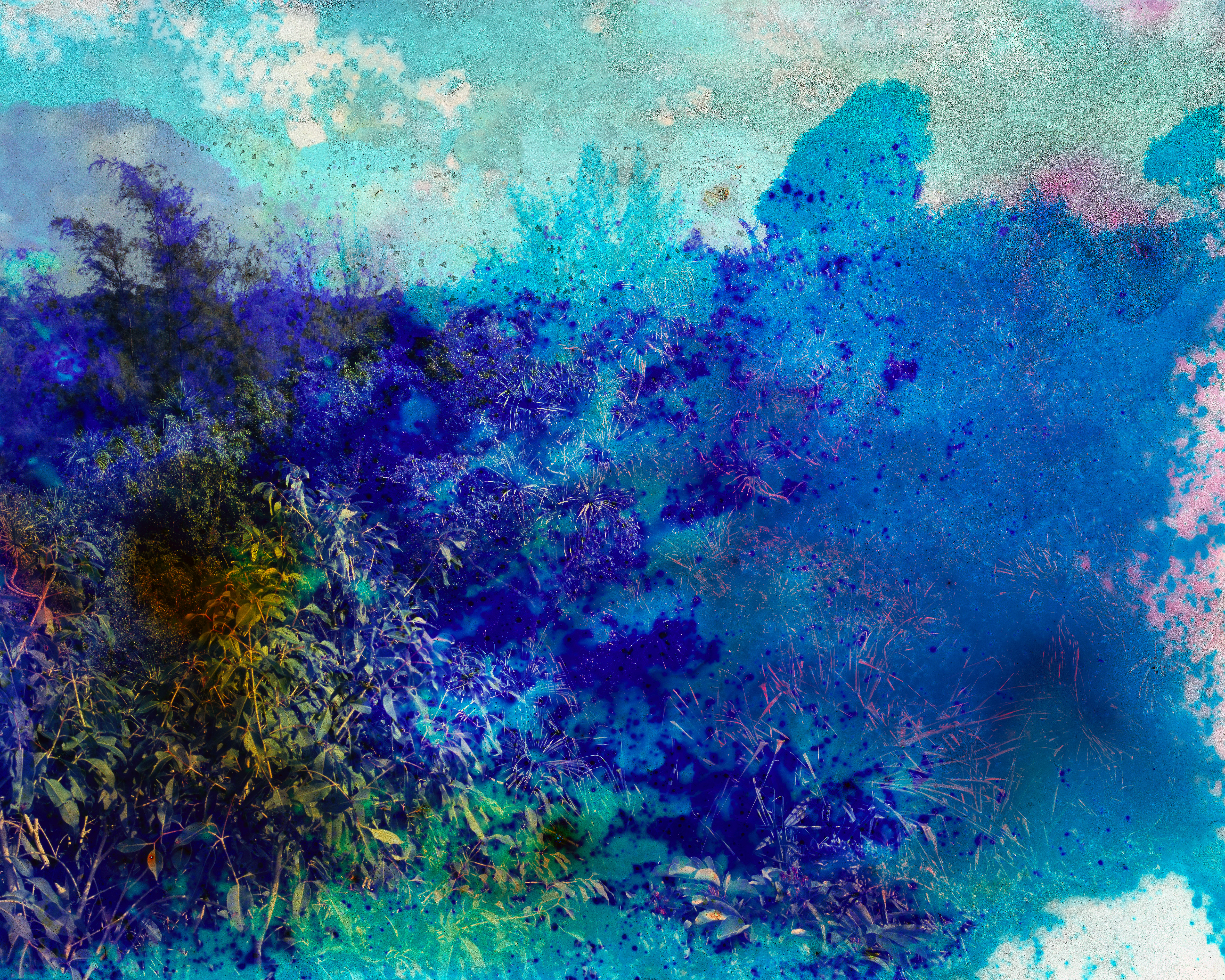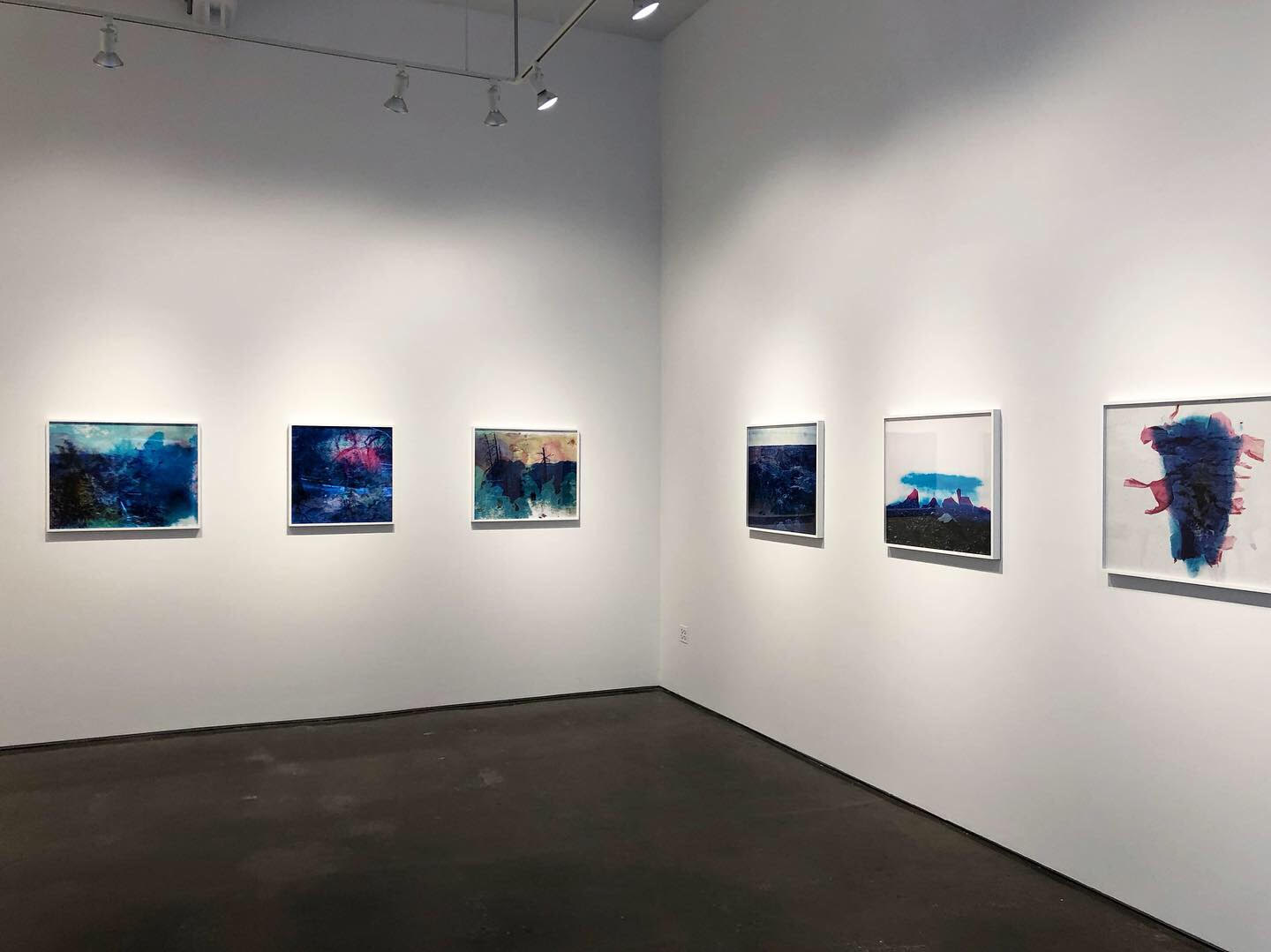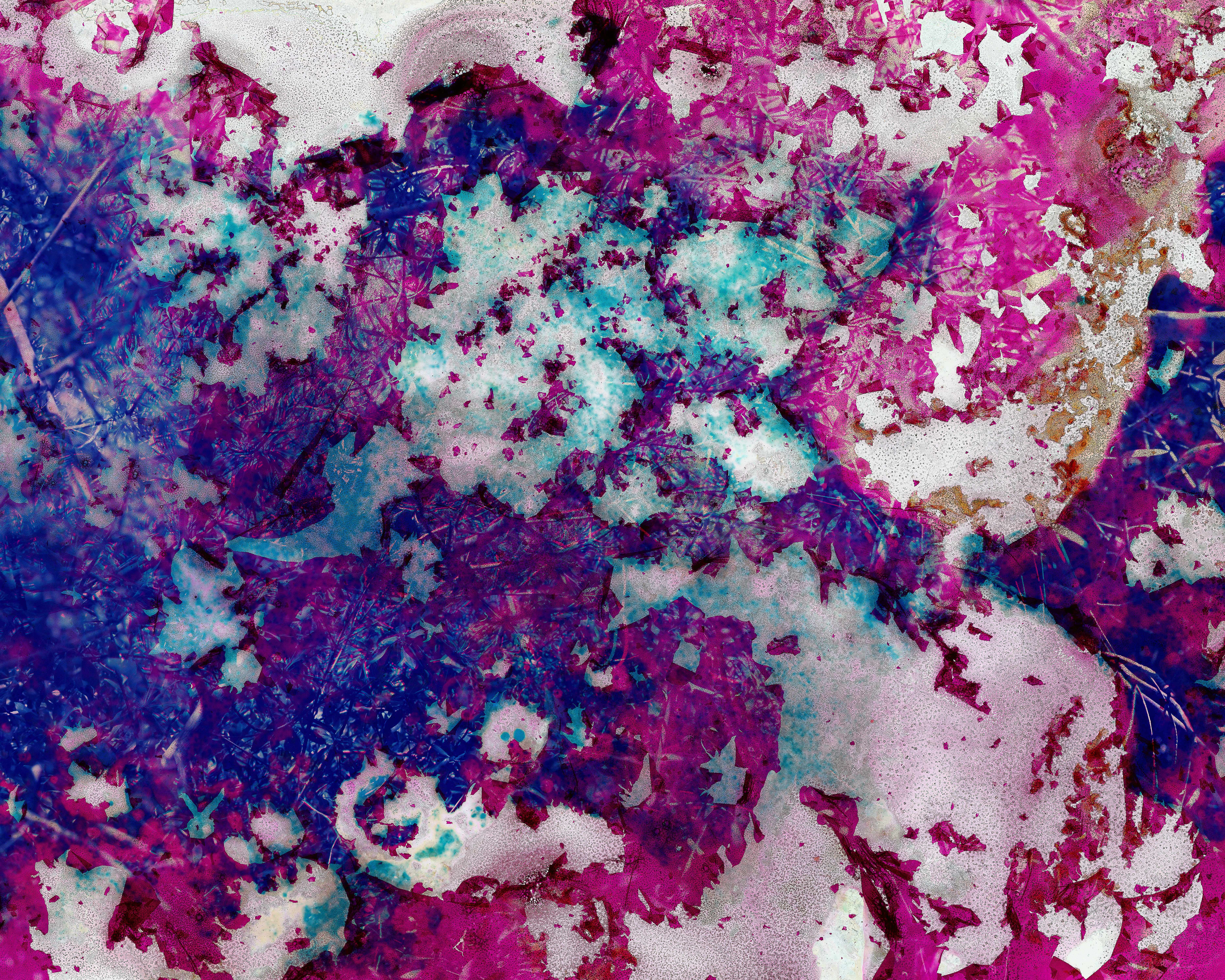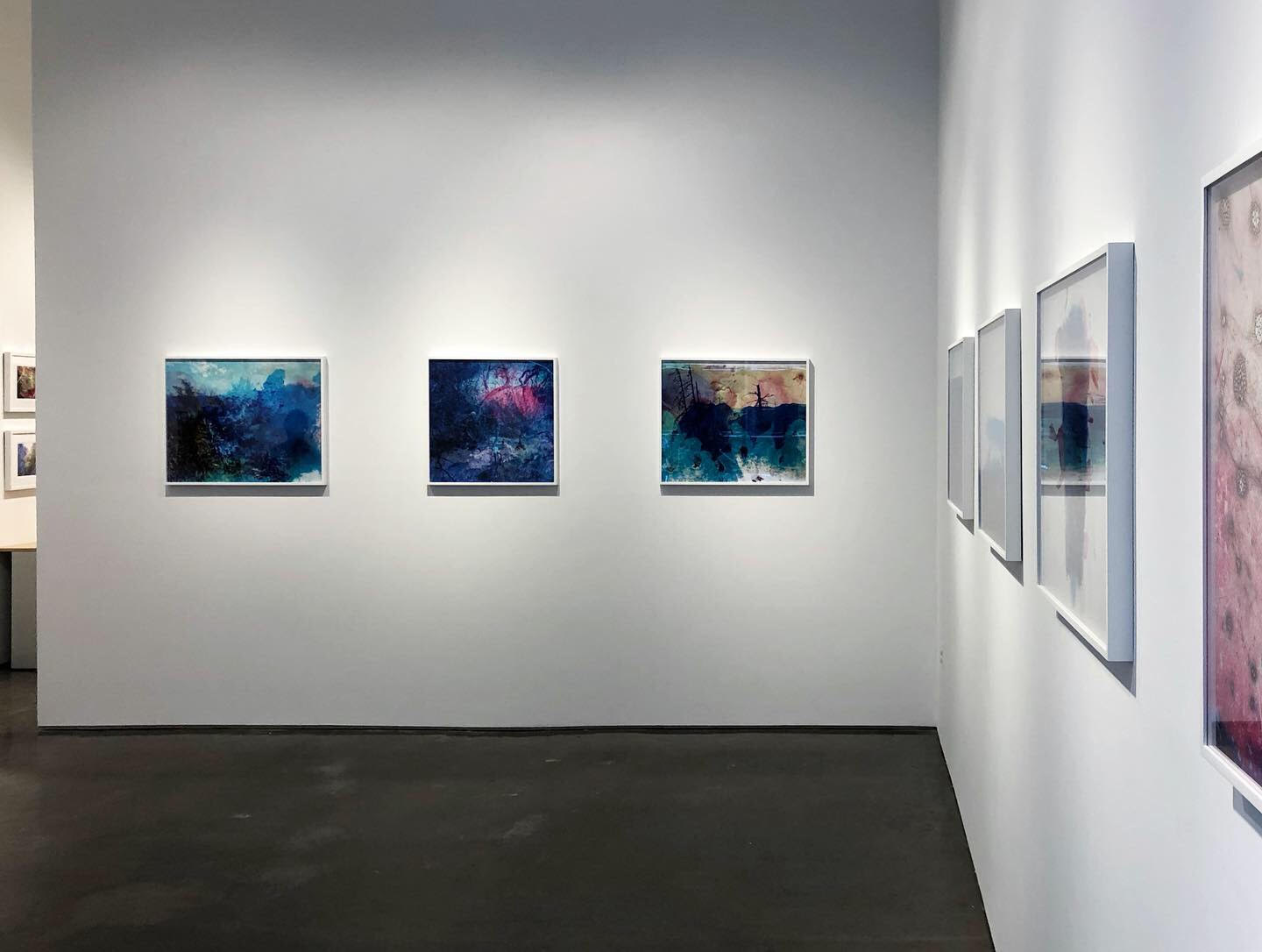As The World Falls Down: Doug Fogelson’s ‘Anthem’
Leaching the prismatic splendor from his landscapes, Doug Fogelson’s latest additions to his Chemical Alterations series combine the photographic with the painterly, the representational with the abstract. Lush fields burn a feverish magenta, dying trees are obscured by cyan shadows, and fine layers of emulsion peel away like blistered skin. Anthem offers an incisive analogy between the artist’s chemical defacement of images of nature and human-exacerbated climate change, with his woozy, dream-like scenes evoking a familiar world rendered increasingly alien.
While the ostensible subject matter of Anthem is modern civilization’s impact on Earth’s ecosystem, its title implies something more politically damning. Previous installments of Chemical Alterations included Breach, Invader, Exit Eden, and Return to Oblivion—described as “loose chapters” in the series—and suggested both existential and biological readings. Anthem, meanwhile, functions as a sardonic comment on the Trump administration and their blasé attitude toward the environment, with these eight images less the “rousing or uplifting song” implied by the title and more of a lament. Given President Trump’s separatist rhetoric and ex-EPA administrator Scott Pruitt’s statement that “the historic restoration of American economic independence” justified the USA’s withdrawal from the Paris Climate Accord, the impacts of climate change are likely to be exacerbated in favor of short-term gain.
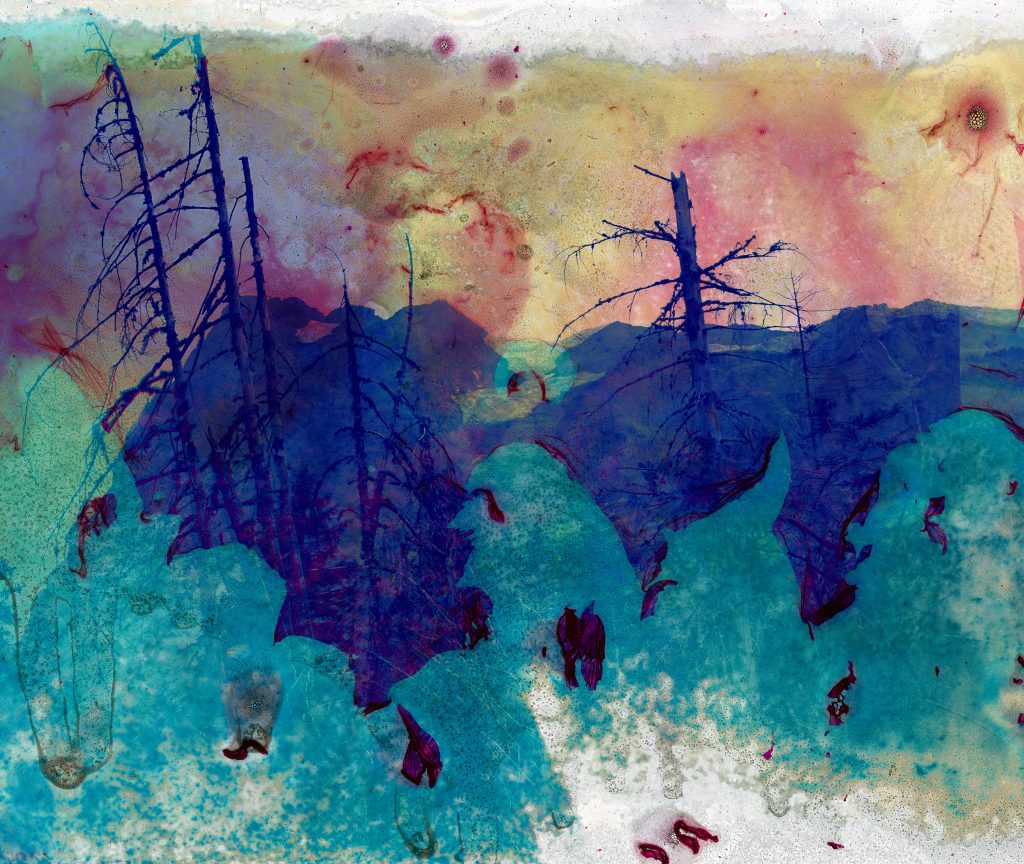
Doug Fogelson, Anthem No 13, 2019. 24 x 28.4 inches. Courtesy Klompching Gallery, New York. © Doug Fogelson.
These multi-hued inversions of 19th century landscape photographs—Carleton Watkins’s sublime pictures of Yosemite Valley spring to mind—pair political crisis with the abuse of nature. In an allusion to the colors of the American flag, shades of red, white and blue predominate, while Fogelson even describes his peeling emulsions as “tattered flags rapidly disintegrating.” Anthem No 6 (2019) extends a critical view of current environmental policy by invoking the “Purple mountain majesties” referred to in the patriotic song “America the Beautiful” (1893). Fogelson’s image of lurid, mountainous pink peaks rising up from a barren outcrop, above which hangs a thick oblong reminiscent of an atomic mushroom cloud, provides a stark contrast to the romantic lyrics of Katherine Lee Bates or the awe-inspiring images of Watkins.
In light of these associations, the conflation of national critique with environmental crisis feels especially palpable in Anthem No 1 (2019). Barely visible branches and leaves are swept up in a whirlpool of dusky blue dye and flaking magenta emulsions. Where the image has been totally erased, irregular areas of muddied white show through—indicating the paper beneath the film’s transparency. In the ravaged materiality of the photograph, this rectangle of besieged nature doubles for the American flag and the country’s current socio-political turmoil.
While his work resounds with dissatisfaction over a lack of national leadership on climate change, Fogelson’s scope is unquestionably universal, and the artist is clearly aware of the reciprocity that exists between individual, international, and ecological behavior. Despite appearing geographically anonymous, his images are taken in locations across the globe: Mexico, Hawaii, Iceland, as well as California. Photographing diverse landscapes on analog film, these are then developed before being treated with a range of industrial chemicals. Various effects are achieved by altering their application: colors are saturated, dye couplers wash away, emulsions melt, and the film’s clear base becomes visible as the original exposure is effaced entirely. In rare instances the full spectrum of color remains. But, as chlorophyll green leaves are corralled into ever decreasing spaces by swathes of cyan or magenta, it only compounds the sense of biological assault on the natural world.
Anthem doesn’t only prophesy apocalypse. Fogelson’s chemical visualizations of radical change also illustrate the interdependence of creation and destruction. The artist is highly aware that “deep in the oceans, underground, in the hottest places as well as the coldest, there will be something that survives us and over great spans of time will evolve back to something more verdant and recognizable.” As various chemical compounds interact with the makeup of the photographic material, and the initial exposure is eradicated in unpredictable ways, new forms bloom. Bubbles, crystallizations, and fractal patterns embed themselves within the film while stray bits of matter accumulate on the wet print. The objective reality that photography supplies becomes wistfully subjective: a meditation on transience, loss, memory and recreation.

Doug Fogelson, Anthem No 3, 2019. 24 x 28.6 inches. Courtesy Klompching Gallery, New York. © Doug Fogelson.
Fogelson’s work asks us to reconsider what we understand by the term “nature.” Rather than something reassuringly familiar, it’s revealed in all its chaotic alterity. This impression is emphasized by a transition from destruction to regeneration seen over seven images. Turquoise, watery blue and pink representations of a denuded natural world give way to increasingly abstract pieces, across which white, annihilating space expands. The penultimate image, which features tapering lengths of flesh-colored emulsion flanking a rocky crevice, palpably suggests forces of creation: particularly the female reproductive system.
We conclude with Anthem No 3 (2019) and a field of wildflowers—faded to white under a magenta sea—metamorphosing into new life. Dozens of amoeba-like clusters of bubbles, embedded within the photographic substrate itself, trail tentacular strings through the image. Here the “natural” forms represented in the initial photograph are revealed as impermanent, their material degradation dramatizing the process of entropy. Reduced to their basic elements, however, this primordial soup provides the conditions necessary for life to begin again—in wildly different guises.
Despite only including eight images, Anthem renders climate change, and the consequences of ignoring it, vividly apprehendable in its neon scenes of natural transformation. But while benefiting from a minimalist presentation—looking visually stunning on uncluttered white walls—the immersive depth of Fogelson’s multi-media projects Potpourri (2012) and Broken Cabinet (2015) is largely absent here. Given the visceral perceptiveness of his Chemical Alterations series, an exhibition combining all of these qualities is eagerly anticipated.
‘Anthem’ @ Klompching Gallery has been extended until October 19th.
Additional installments in Doug Fogelson’s ‘Chemical Alterations’ series can be found here.
Daniel Pateman is a freelance writer with an MA in Contemporary Literature and Culture. He writes for Aesthetica magazine, The Brooklyn Rail, Photomonitor, and This is Tomorrow among others.

